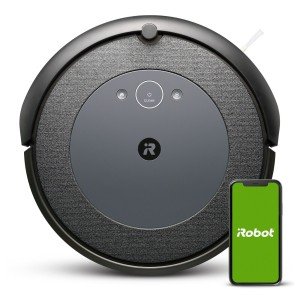Understanding Floor Robots: The Future of Home Cleaning
In the last few years, technological advancements have substantially changed the landscape of home cleaning. Amongst the most notable innovations is the floor robot, a device that has actually quickly gained popularity for its convenience and efficiency. This article intends to check out the various elements of floor robots, their functionality, advantages, popular designs, and some regularly asked concerns to help consumers make notified choices.
What is a Floor Robot?
A floor robot, typically referred to as a robotic vacuum, is an automated device designed to browse floorings and eliminate dirt, dust, and particles. Unlike traditional vacuum, floor robots run autonomously, offering a hassle-free cleaning experience. These smart makers utilize sensors, mapping technologies, and advanced algorithms to clean numerous surfaces, consisting of hardwood, tile, and carpet.
How Do Floor Robots Work?
Floor robots run through a combination of software and hardware parts. Here are the essential functions that enable their performance:
1. Sensing units
- Challenge Detection: Floor robots have integrated sensing units that assist them identify barriers, enabling them to browse around furniture and prevent falls.
- Cliff Sensors: These avoid the robot from dropping stairs or ledges by acknowledging modifications in elevation.
2. Navigation and Mapping
- Visual Mapping: Some advanced designs employ cameras and laser technology to develop detailed maps of the cleaning location.
- Simultaneous Localization and Mapping (SLAM): This method helps the robot track its location and efficiently plan its cleaning path.
3. Cleaning Mechanisms
- Suction Power: Most robotic vacuums use a suction system to record dirt and dust, which is then stored in an onboard dustbin.
- Brushing Systems: Many designs come geared up with turning brushes or mops for boosted cleaning abilities, especially on carpets or hard surfaces.
4. Smart Features
- Connectivity: Many floor robots support Wi-Fi connectivity, allowing users to manage them through smart device apps or smart home systems.
- Scheduling: Users can arrange cleaning times, ensuring their homes are tidy even when they're not there.
5. Self-governing Charging
- Self-Docking: Most robots automatically go back to their charging station once their battery runs low, guaranteeing they're always prepared to clean.
Benefits of Using a Floor Robot
The adoption of floor robots features many advantages that make them appealing to users:
1. Convenience
Floor robots can clean up while users participate in to other tasks, enabling multitasking and time-saving.
2. Increased Efficiency
Robotic vacuums frequently cover more ground in less time compared to standard techniques, thanks to their systematic cleaning patterns.
3. Constant Cleaning Routine
Users can set up routine cleansings, guaranteeing that their homes remain tidy without requiring day-to-day intervention.
4. Ease of access
Robotic vacuums can quickly access hard-to-reach areas, such as under furnishings or in tight spaces.
5. Advanced Features
Many designs come geared up with functions like voice control and app integration, boosting usability and ease of access.
Popular Floor Robots
When thinking about a floor robot, numerous brand names and models cater to various needs and budget plans. Here's a short overview of some leading options:
| Brand | Model | Key Features | Price Range |
|---|---|---|---|
| iRobot | Roomba i7+ | Smart mapping, self-emptying dock | ₤ 600 - ₤ 800 |
| Roborock | Roborock S7 | Sonic mopping, barrier avoidance | ₤ 500 - ₤ 700 |
| Neato | Neato D7 | D-shape design, advanced suction | ₤ 600 - ₤ 800 |
| Ecovacs | Ecovacs Deebot T8 | Mopping function, advanced mapping | ₤ 600 - ₤ 800 |
| Shark | Shark IQ Robot | Self-emptying base, home mapping | ₤ 400 - ₤ 600 |
(Note: Prices might differ based upon merchants and ongoing promos.)
Often Asked Questions (FAQs)
1. Are floor robots efficient on carpets?
Yes, many contemporary floor robots are created to clean numerous surface areas, consisting of carpets. automatic vacuum cleaner with strong suction and rotating brushes are particularly effective at getting family pet hair and ground-in dirt.
2. How often should I run my floor robot?
This depends upon your home's requirements. For homes with animals or high foot traffic, everyday or every other day cleaning might be useful. For quieter households, running the robot as soon as a week may be adequate.
3. Can I manage my floor robot from another location?
Many floor robots include mobile phone apps that permit users to manage their gadgets remotely, schedule cleanings, and screen efficiency.
4. Do I need to empty the dustbin regularly?
Most robots need regular emptying of the dustbin, specifically in homes with pets or heavy soil. However, some designs provide self-emptying abilities, which minimize user participation.
5. Are floor robots ideal for all kinds of floor covering?
The majority of floor robots work on numerous surface areas, consisting of wood, tile, and low-pile carpets. However, some might carry out better on particular surface areas, so it's necessary to pick a model fit to your home's needs.
As homes continue to welcome technology, floor robots have become necessary cleaning buddies, providing convenience, performance, and advanced features. Understanding automatic vacuum cleaner , benefits, and readily available designs enables consumers to pick the right floor robot to meet their particular cleaning needs. By buying this innovative technology, property owners can ensure their living areas stay tidy and comfortable with very little effort.

